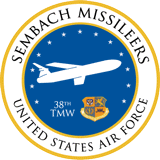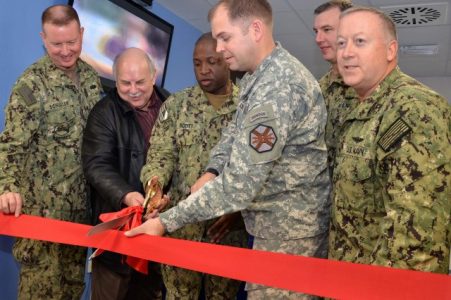
Navy program arrives at Sembach Kaserne
December 14, 2012
By Rick Scavetta, U.S. Army Garrison Kaiserslautern
http://www.army.mil/article/93018/Navy_program_arrives_at_Sembach_Kaserne/
SEMBACH, Germany – The U.S. Navy has opened a Warrior Transition Program at U.S. Army Garrison Kaiserslautern, a step that leaders say will continue to support Sailors returning to naval duties after serving ashore in combat zones.
Leaders from several units at U.S. Army Garrison Kaiserslautern joined Rear. Adm. Kevin Scott, deputy commander, U.S. Naval Forces, U.S. Central Command, during a Dec. 12 ribbon cutting ceremony on Sembach Kaserne.
“I share your joy in being able to open this fantastic facility,” Scott said. “It is a great Navy day.”
When Scott asked the group — mostly Army officers and civilian employees — if they knew about the Navy’s program prior to its move to Germany, most said they didn’t.
Following the Sept. 11, 2001 terrorist attacks, the Navy tasked Sailors to shore duty in support of ground forces in Afghanistan and Iraq. They call them “individual augmentees,” Scott explained.
At first, the Navy’s focus was quickly moving manpower to the fight, he said. A cook aboard an aircraft carrier could be assigned to machine gun on a Marine ground convoy, Scott said, as an example of how different shore duty could be for some Sailors. Returning to a traditional Navy assignment was bound to be challenging.
“We realized, on the back side, that we weren’t doing what we needed to do,” Scott said. “We needed to give our IAs time to transition, a down time to condition themselves before returning back to their families and loved ones and also transition them back to the Navy.”
The Navy Warrior Transition program began in 2006 and moved to Camp Arifjan, Kuwait, in 2009. The last class of 200 Sailors recently wrapped up in Kuwait. The first class in Germany is underway.
During their stay, Sailors check in gear, undergo mentoring and medical reviews, plus receive psychological support. What once took up to two weeks now just takes a few days, Scott said.
The center is located below the recently renovated Sembach Community Activities Center. Sailors stay in barracks nearby.
Caring for Navy personnel who’ve served downrange is just as important for the garrison as is supporting Soldiers, said Command Sgt. Maj. Ronald Creighton, the garrison’s senior enlisted leader. In the KMC, one of the largest joint communities overseas, cooperation between various services comes with the territory, he said.
“We are truly joint when it comes to supporting Soldiers, Sailors, Airmen and Marines,” Creighton said. “There are no lines in the sand. We’ll reach across our branches to provide care equally.”


